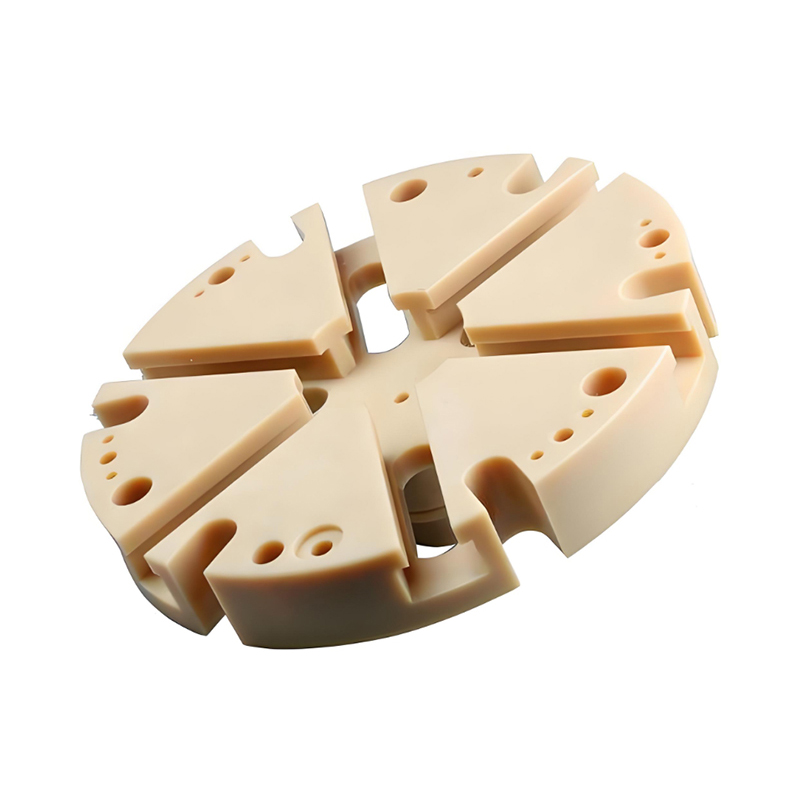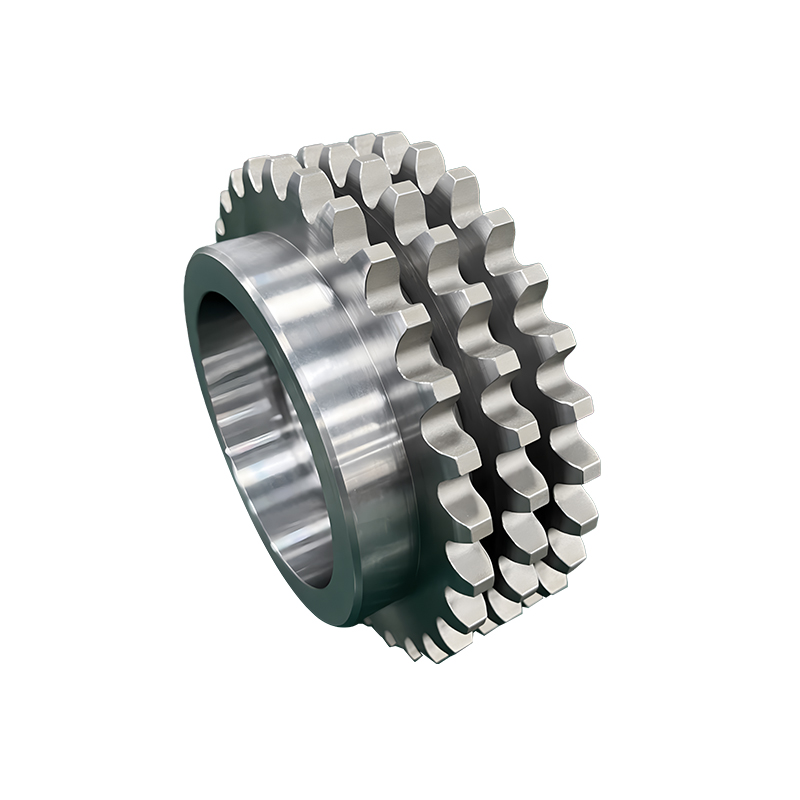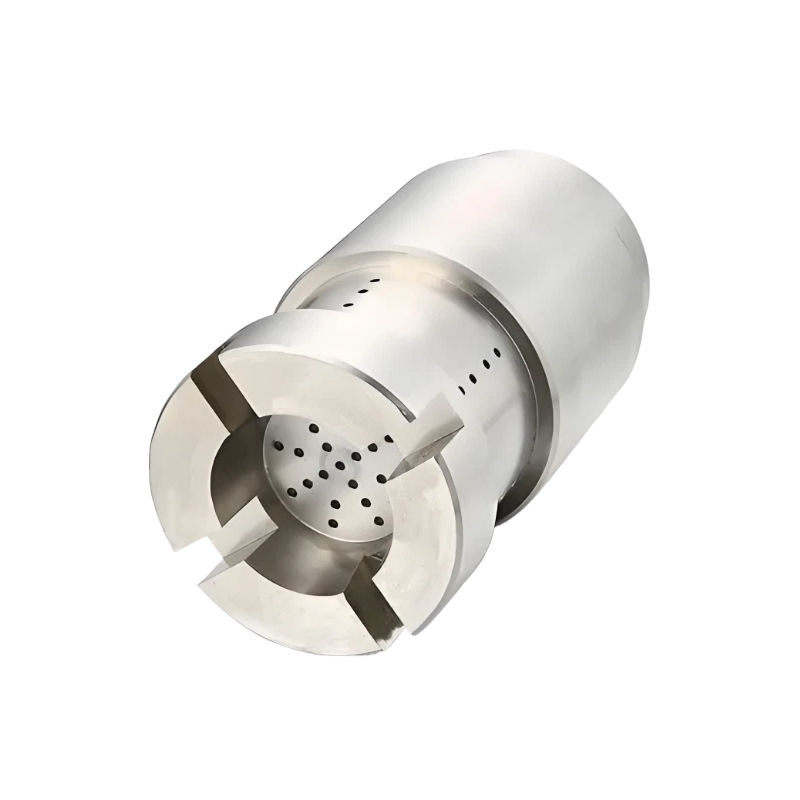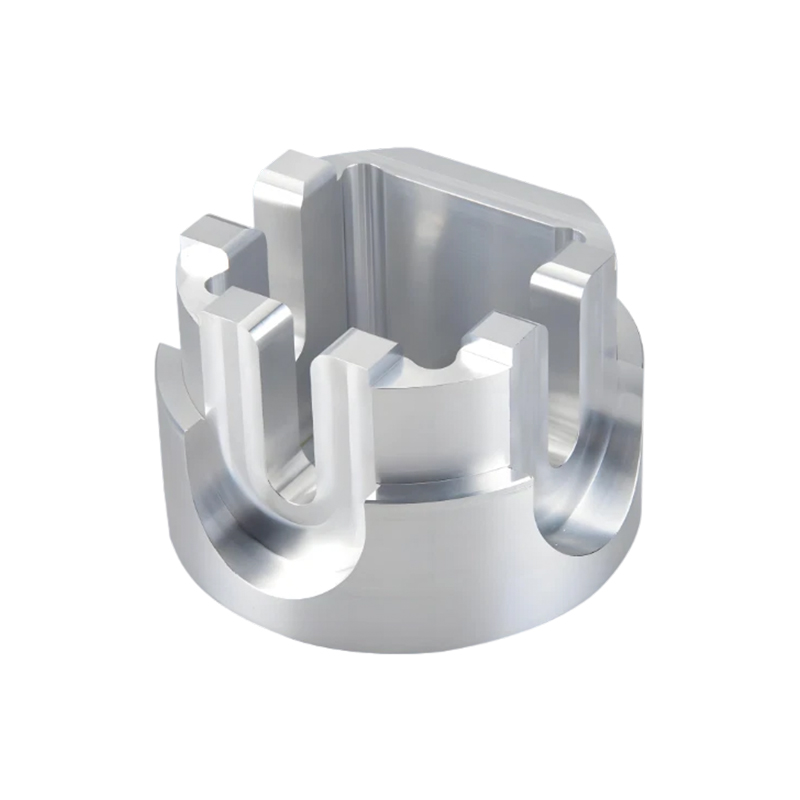How can plastic parts enhance wear and corrosion resistance by selecting high-quality polymer materials?
Release Time : 2025-06-26
Plastic parts significantly enhance their wear and corrosion resistance by selecting high-quality polymer materials, providing excellent performance guarantee for various applications. This choice not only improves the service life and reliability of the product, but also meets the use requirements in various complex environments, becoming a key factor in improving product performance and quality.
First, the molecular structure of polymer materials gives plastic parts excellent wear resistance. These materials usually have long-chain or mesh molecular structures, which enable them to effectively disperse stress when subjected to friction and reduce the risk of local wear. Compared with traditional metal materials, some high-performance plastics have a lower friction coefficient, which means that the friction generated when moving parts contact is smaller, thereby reducing the wear rate. In addition, special fillers or reinforcing agents can be added to some polymer materials to further improve their surface hardness and wear resistance. This design makes plastic parts perform well in application scenarios that require frequent movement or withstand high pressure, such as mechanical parts such as bearings and gears.
Secondly, high-quality polymer materials have excellent chemical corrosion resistance, which is due to the fact that the chemical bonds in their molecular structure are relatively stable and not easy to react with external chemicals. Many plastic materials have a natural resistance to acid and alkali solutions, grease and other organic solvents, which enables them to operate stably and for a long time in working environments containing corrosive media. For example, in equipment used in the chemical industry, plastic parts can effectively prevent internal liquid leakage and corrosion of container walls, ensuring the safety and continuity of the production process. At the same time, this corrosion resistance also reduces maintenance frequency and costs, because there is no need to frequently replace damaged parts.
In addition, the selection of polymer materials also takes into account their performance under extreme temperature conditions. High-quality plastic materials can maintain good physical properties in high temperature environments without softening or deformation; and can maintain sufficient flexibility and strength under low temperature conditions to avoid brittle cracking. This wide operating temperature range is particularly important for equipment that needs to operate in different climates, such as parts in the engine compartment of a car or the housing of electronic equipment used outdoors. By selecting the right polymer material, plastic parts can provide consistent and reliable performance over a wide temperature range, ensuring that the normal operation of the equipment is not affected by environmental changes.
In addition, the manufacturing process of plastic parts also affects its wear resistance and corrosion resistance to a certain extent. Modern injection molding technology and precision machining methods can achieve a high degree of control over the shape and size of plastic parts, ensuring that each finished product meets strict design standards. Precise manufacturing processes help eliminate potential quality defects such as holes and cracks, which are the main causes of early wear and corrosion failure. In addition, surface treatment technologies such as coating or electroplating can further enhance the protective ability of plastic parts. For example, some special coatings can form an additional protective film, increase surface hardness and improve corrosion resistance, so that plastic parts can remain in good condition for a long time in harsh environments.
In addition, plastic parts made of high-quality polymer materials also have the advantage of light weight, which is particularly important for mobile devices or vehicles. Lighter weight not only reduces energy consumption, but also reduces the requirements for supporting structures, thereby indirectly improving the reliability and safety of the overall system. In the aerospace field, reducing weight means higher fuel efficiency and greater load capacity; while in everyday consumer products, such as home appliances or electronic products, lightweight design brings better portability and user experience. At the same time, the elasticity and toughness of the polymer material itself also provide additional cushioning for plastic parts, helping to absorb impact energy and prevent damage caused by accidental collisions.
It is worth mentioning that with the increasing awareness of environmental protection, more and more companies are beginning to pay attention to the sustainable development of materials. Many new polymer materials not only have the above-mentioned excellent properties, but also meet green environmental protection standards. For example, recyclable plastic materials can reduce resource waste and environmental pollution without affecting product quality. By rationally selecting and using such materials, companies can not only fulfill their social responsibilities, but also win the trust and support of consumers.
Finally, in practical applications, plastic parts are widely used in many industries due to their excellent wear resistance and corrosion resistance. Whether it is connectors and sensor housings in electronic equipment, or pipeline systems and interior parts in the automotive industry, or even switch buttons and panels of household appliances, plastic parts can be seen. These parts not only undertake functional tasks, but also play an important role in appearance design, ergonomics, etc. By continuously optimizing material formulations and processing technology, manufacturers can develop products that are more in line with market demand and promote continuous innovation and development in various industries.
In summary, plastic parts significantly enhance wear resistance and corrosion resistance by selecting high-quality polymer materials, providing a solid foundation for various applications. From molecular structure to manufacturing process, and then to the final application effect, every link is providing users with a more durable, reliable and environmentally friendly solution. With the advancement of science and technology, we have reason to believe that plastic parts will show unlimited potential in more fields in the future and continue to drive all walks of life forward. In this process, continuous attention to user needs and technological innovation will be the key driving force for product development.
First, the molecular structure of polymer materials gives plastic parts excellent wear resistance. These materials usually have long-chain or mesh molecular structures, which enable them to effectively disperse stress when subjected to friction and reduce the risk of local wear. Compared with traditional metal materials, some high-performance plastics have a lower friction coefficient, which means that the friction generated when moving parts contact is smaller, thereby reducing the wear rate. In addition, special fillers or reinforcing agents can be added to some polymer materials to further improve their surface hardness and wear resistance. This design makes plastic parts perform well in application scenarios that require frequent movement or withstand high pressure, such as mechanical parts such as bearings and gears.
Secondly, high-quality polymer materials have excellent chemical corrosion resistance, which is due to the fact that the chemical bonds in their molecular structure are relatively stable and not easy to react with external chemicals. Many plastic materials have a natural resistance to acid and alkali solutions, grease and other organic solvents, which enables them to operate stably and for a long time in working environments containing corrosive media. For example, in equipment used in the chemical industry, plastic parts can effectively prevent internal liquid leakage and corrosion of container walls, ensuring the safety and continuity of the production process. At the same time, this corrosion resistance also reduces maintenance frequency and costs, because there is no need to frequently replace damaged parts.
In addition, the selection of polymer materials also takes into account their performance under extreme temperature conditions. High-quality plastic materials can maintain good physical properties in high temperature environments without softening or deformation; and can maintain sufficient flexibility and strength under low temperature conditions to avoid brittle cracking. This wide operating temperature range is particularly important for equipment that needs to operate in different climates, such as parts in the engine compartment of a car or the housing of electronic equipment used outdoors. By selecting the right polymer material, plastic parts can provide consistent and reliable performance over a wide temperature range, ensuring that the normal operation of the equipment is not affected by environmental changes.
In addition, the manufacturing process of plastic parts also affects its wear resistance and corrosion resistance to a certain extent. Modern injection molding technology and precision machining methods can achieve a high degree of control over the shape and size of plastic parts, ensuring that each finished product meets strict design standards. Precise manufacturing processes help eliminate potential quality defects such as holes and cracks, which are the main causes of early wear and corrosion failure. In addition, surface treatment technologies such as coating or electroplating can further enhance the protective ability of plastic parts. For example, some special coatings can form an additional protective film, increase surface hardness and improve corrosion resistance, so that plastic parts can remain in good condition for a long time in harsh environments.
In addition, plastic parts made of high-quality polymer materials also have the advantage of light weight, which is particularly important for mobile devices or vehicles. Lighter weight not only reduces energy consumption, but also reduces the requirements for supporting structures, thereby indirectly improving the reliability and safety of the overall system. In the aerospace field, reducing weight means higher fuel efficiency and greater load capacity; while in everyday consumer products, such as home appliances or electronic products, lightweight design brings better portability and user experience. At the same time, the elasticity and toughness of the polymer material itself also provide additional cushioning for plastic parts, helping to absorb impact energy and prevent damage caused by accidental collisions.
It is worth mentioning that with the increasing awareness of environmental protection, more and more companies are beginning to pay attention to the sustainable development of materials. Many new polymer materials not only have the above-mentioned excellent properties, but also meet green environmental protection standards. For example, recyclable plastic materials can reduce resource waste and environmental pollution without affecting product quality. By rationally selecting and using such materials, companies can not only fulfill their social responsibilities, but also win the trust and support of consumers.
Finally, in practical applications, plastic parts are widely used in many industries due to their excellent wear resistance and corrosion resistance. Whether it is connectors and sensor housings in electronic equipment, or pipeline systems and interior parts in the automotive industry, or even switch buttons and panels of household appliances, plastic parts can be seen. These parts not only undertake functional tasks, but also play an important role in appearance design, ergonomics, etc. By continuously optimizing material formulations and processing technology, manufacturers can develop products that are more in line with market demand and promote continuous innovation and development in various industries.
In summary, plastic parts significantly enhance wear resistance and corrosion resistance by selecting high-quality polymer materials, providing a solid foundation for various applications. From molecular structure to manufacturing process, and then to the final application effect, every link is providing users with a more durable, reliable and environmentally friendly solution. With the advancement of science and technology, we have reason to believe that plastic parts will show unlimited potential in more fields in the future and continue to drive all walks of life forward. In this process, continuous attention to user needs and technological innovation will be the key driving force for product development.







